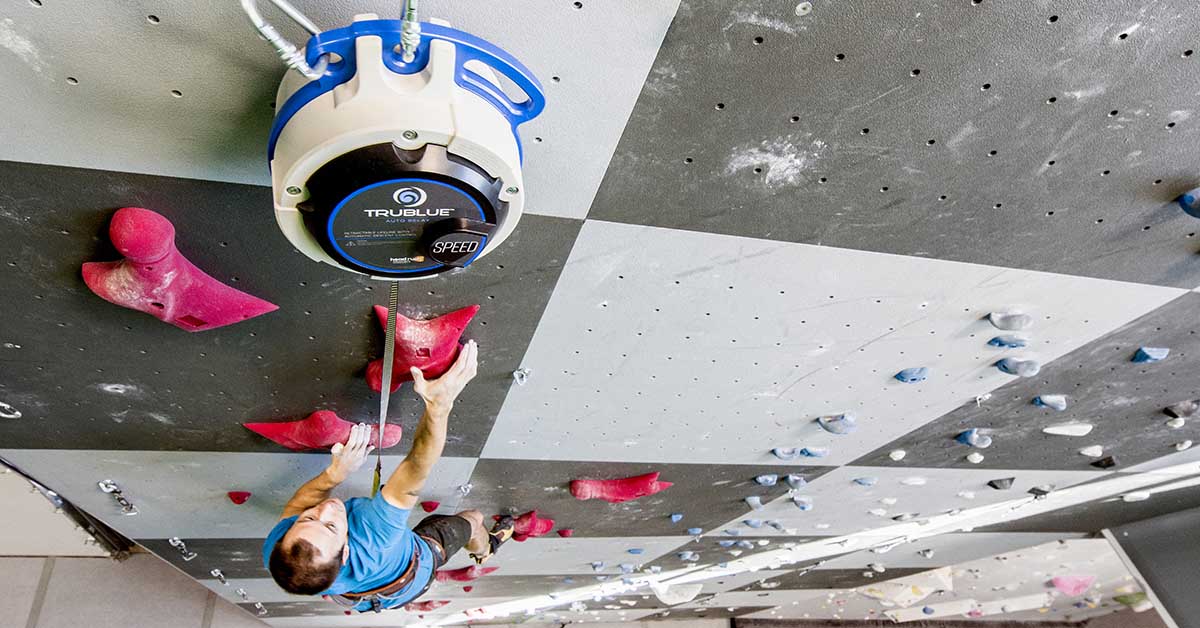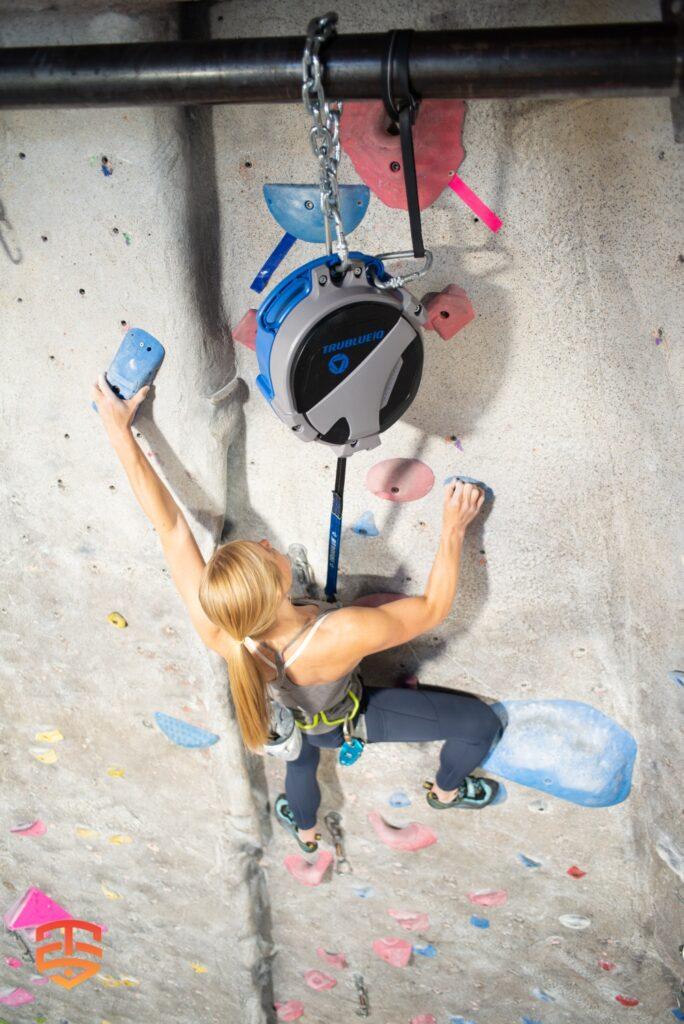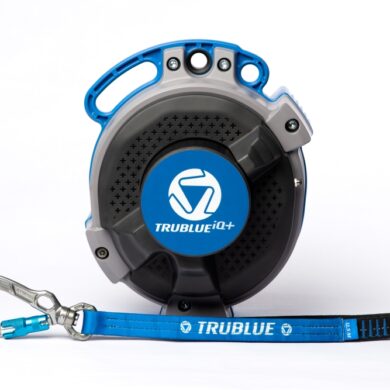
We spoke to climbing legend Chris Sharma about what measures should be made to reduce dangers and improve the entire indoor climbing experience as part of our ongoing auto belay safety campaign. Chris owns and operates three Sharma Climbing Gyms around Spain, in addition to being one of the most accomplished climbers of all time. He describes eight auto belay safety procedures now in use at his facilities in this video.
“When done correctly, climbing is extremely safe. But, whether it’s their knot, harness, or, in the case of auto belays, ensuring sure they’re clipped into their belay loop, a climber must always take responsibility for their own safety.” Chris Sharma, a skilled rock climber and the proprietor of three climbing clubs, says:
1. Create an auto-belay zone.
Setting up a specific space for auto belays might have a lot of advantages, so it’s worth thinking about if your gym’s layout enables it. In terms of personnel, an auto belay zone allows a small number of devoted staff members to oversee large groups of climbers. A separate vehicle belay zone also promotes safety, reduces potential risks, contributes to the development of a distinct community, and improves traffic flow across the facility.
2. Assign a belay orientation to the auto belay.
Many facilities skip the orientation stage entirely because auto belays are such simple devices. Unfortunately, this training gap can result in unneeded complications. Because nearly all auto belay-related injuries are caused by human mistake, it’s important to make sure climbers are aware of the risks and how to avoid them.
Basic climbing skills such as how to tighten a harness, clip into a carabiner, and test for appropriate webbing retraction can help beginning climbers avoid injuries and gain confidence.
Auto belay orientation for more experienced climbers should emphasize the significance of staying alert of your surroundings at all times. Climbers with more experience than beginners are considerably more likely to become absorbed with getting the most out of their exercises and neglect to clip into the auto belay before beginning up the wall.
3. Keep a record of your auto-belay skills.
Gyms should have a system in place to track which climbers are auto belay capable, just like they do for top roping or lead climbing. There are two steps to this process: orientation and assessment. Climbers should be able to demonstrate their understanding on an actual auto belay after completing orientation.
4. Provide cards with auto belay orientation.
Providing auto belay orientation cards is an easy, visual approach to determine if a climber is certified as auto belay competent. Staff members can easily distinguish between auto belay, top rope, and lead climbing certifications by color coding these cards.
5. Make use of belay gates
Climbers will find it difficult to forget to clip in before climbing because of the vivid colors, powerful lettering, and large footprint of belay gates. Belay gates also aid to separate nearby climbers at the wall’s base and alert spectators not to stand beneath active climbers.
6. Use belay gates to cover the start holds.
Covering the starting holds of a route with the corresponding belay gate is one of the finest techniques to prevent human error. While this may necessitate a few route tweaks, the design adds an extra layer of protection against careless climbers.
7. Make use of fitness trackers
One or two individuals are all that is required to provide auto belay orientations, answer questions, and verify that everyone follows basic safety procedures. Gym monitors should undergo particular internal training for overseeing auto belay use, same as they do for other disciplines, and should feel comfortable conducting an auto belay orientation.
8. If at all feasible, keep climbing disciplines distinct.
Auto belays dramatically boost a given area’s throughput, allowing for more climbs in a smaller space in less time. You may limit traffic in certain locations, as well as the risks of overlapping swings, falls, and collisions, by keeping auto belays distinct from top rope and lead climbing routes. Auto belay users will be less tempted to grasp at or clip into quickdraws if the disciplines are separated.
Separating the different disciplines not only improves safety, but it also improves the whole climbing experience. Beginners will feel more at ease in a supervised atmosphere, while expert climbers will be able to complete more training laps with fewer stops.

Vertical Auto Belay systems
Grow your climbing community by providing more access to more routes for more climbers.
Auto Belay makes climbing simple and approachable, turning first-time users into return customers. TRUBLUE Auto Belays are engineered to minimize maintenance and are built to last. Our patented magnetic braking system, delivers the smoothest user experience, the highest level of reliability, and dramatically reduces device downtime.
Dive Deeper: Exploring Auto Belay Technology with Expert Insights
Auto belays are transforming the world of indoor climbing, offering convenience and safety for climbers of all levels. But how exactly do they work, and what are the key considerations for using them? To learn more about the intricacies of auto belay technology and gain valuable insights from experts in the field, check out our additional resources below…
- Comparison of Auto Belay’s: what’s new in the TRUBLUE iQ series
- Using Technology to Make Your Climbing Gym Accessible and Inclusive
- A Closer Look at the Auto Belay System
- Next Generation Auto Belay – TRUBLUE iQ
- Every modern climbing gym should have these 5 features
- Everything You Need to Know about Buying Auto Belays
- Increase Revenue and Customer Satisfaction at Family Entertainment Centers
- Catch-and-Hold: What is it and how does it work?
- Leading the Way in profitable and safe climbing
- Why Family Entertainment Centers Trust TRUBLUE Auto Belays
- Creating Value for Customers by Using an Auto Belay
- TRUBLUE iQ+ World’s first catch-and-hold auto belay
- Drive Revenue and Customer Satisfaction with Auto Belays
- 7 Ways Magnetic Braking Is Better Than Friction
- No Belayer Necessary: Understanding Auto belays
- Competitive Advantage of an Auto Belay
- ROI at Climbing Walls and Family Entertainment Centers
- Auto-Belay and hands-free climbing challenges
- Why using Auto Belays Boosts your Business
- The Science of Eddy Current Magnetic Braking
-
 TRUBLUE iQ+ | Catch & Hold Auto Belay€ 4.399,00 – € 4.759,00 Ex VAT
TRUBLUE iQ+ | Catch & Hold Auto Belay€ 4.399,00 – € 4.759,00 Ex VAT -
 TRUBLUE SPEED Auto Belay | 7,5 – 16 meter€ 2.799,00 – € 3.059,00 Ex VAT
TRUBLUE SPEED Auto Belay | 7,5 – 16 meter€ 2.799,00 – € 3.059,00 Ex VAT -
 TRUBLUE iQ Auto Belay | 4,5 – 20 meter€ 2.799,00 – € 3.159,00 Ex VAT
TRUBLUE iQ Auto Belay | 4,5 – 20 meter€ 2.799,00 – € 3.159,00 Ex VAT







